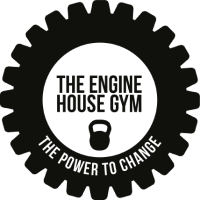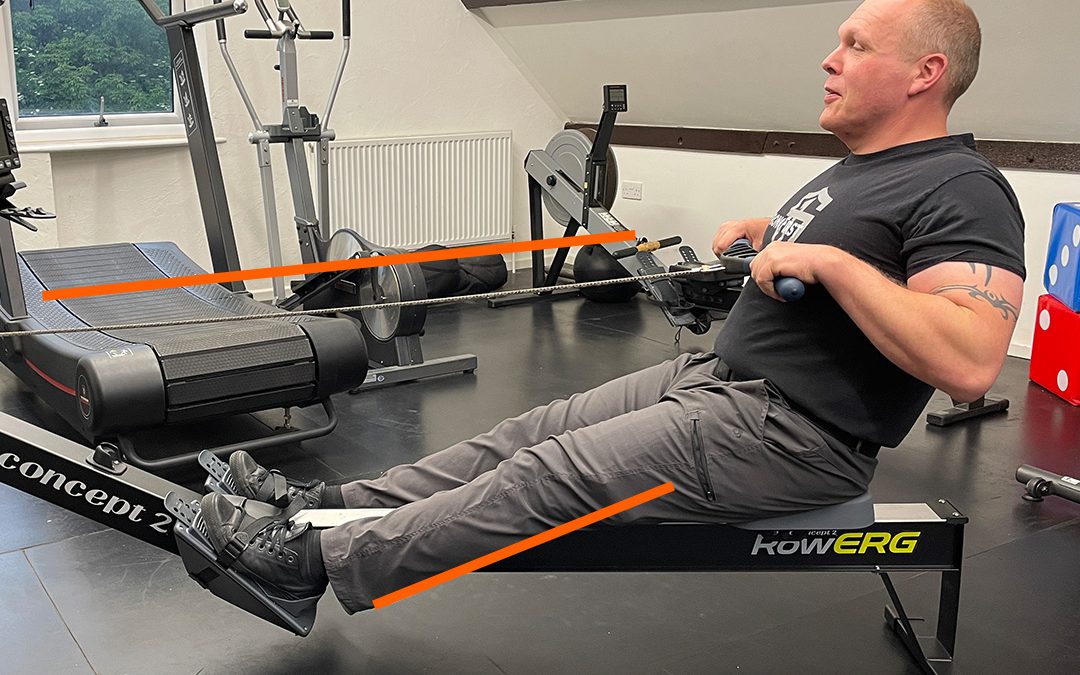As some of our beady eyed gym goers have noticed we’ve updated a piece of kit in the gym – a brand spanking new concept 2 rowing machine with all the gizmo’s and gadgets – not a speck of rust in sight!
As kettle bell specialists, you may wonder why we dedicate space to this machine and what its purpose is – so we’re gonna fill you in on how rowing, biomechanically speaking, is not too dissimilar from some types of kettle bell work and can help with lots of bell moves such as the swing.
Let’s break down the rowing movement, it has 4 parts.
The Catch
This is when you’re sitting on the rower, holding onto the bar in your start position.
- Arms should be straight
- Upper body leans forward from the hip, with your shoulders leading the way
- Shins should be vertical (or as close as you can get)
- Heels may lift
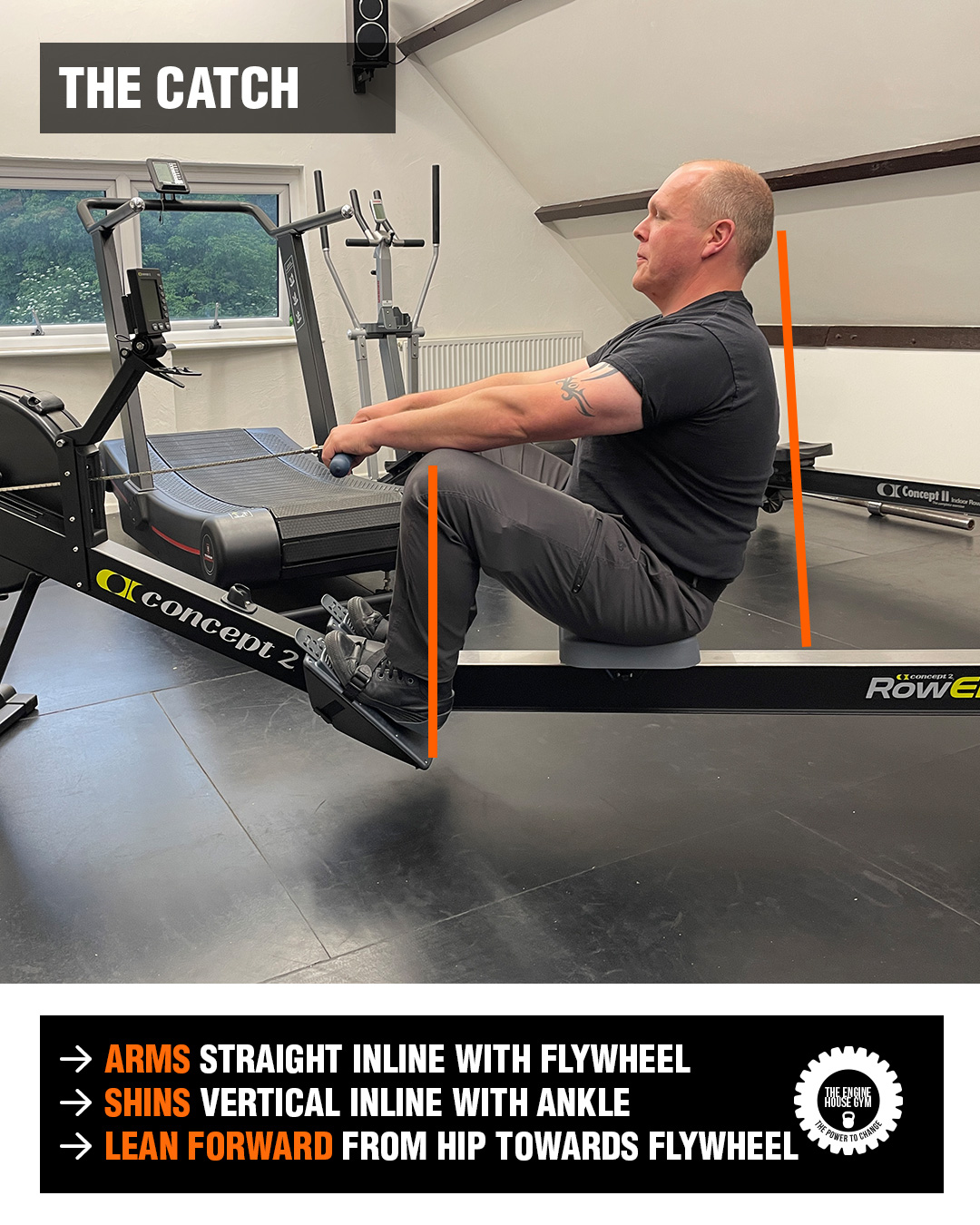
The Drive
A bit like coming out of the starting blocks, the drive is what it says it is. This is the point where you initiate the backwards movement on the rower. 60% of the power delivered on the drive should be from your legs, 20% from your core and 20% from your arms.
- Press with your legs
- Swing back towards the end of the stroke
- The final movement is pulling with your arms
- Hands should move in a straight line to and from the fly wheel
- Shoulders are low and relaxed
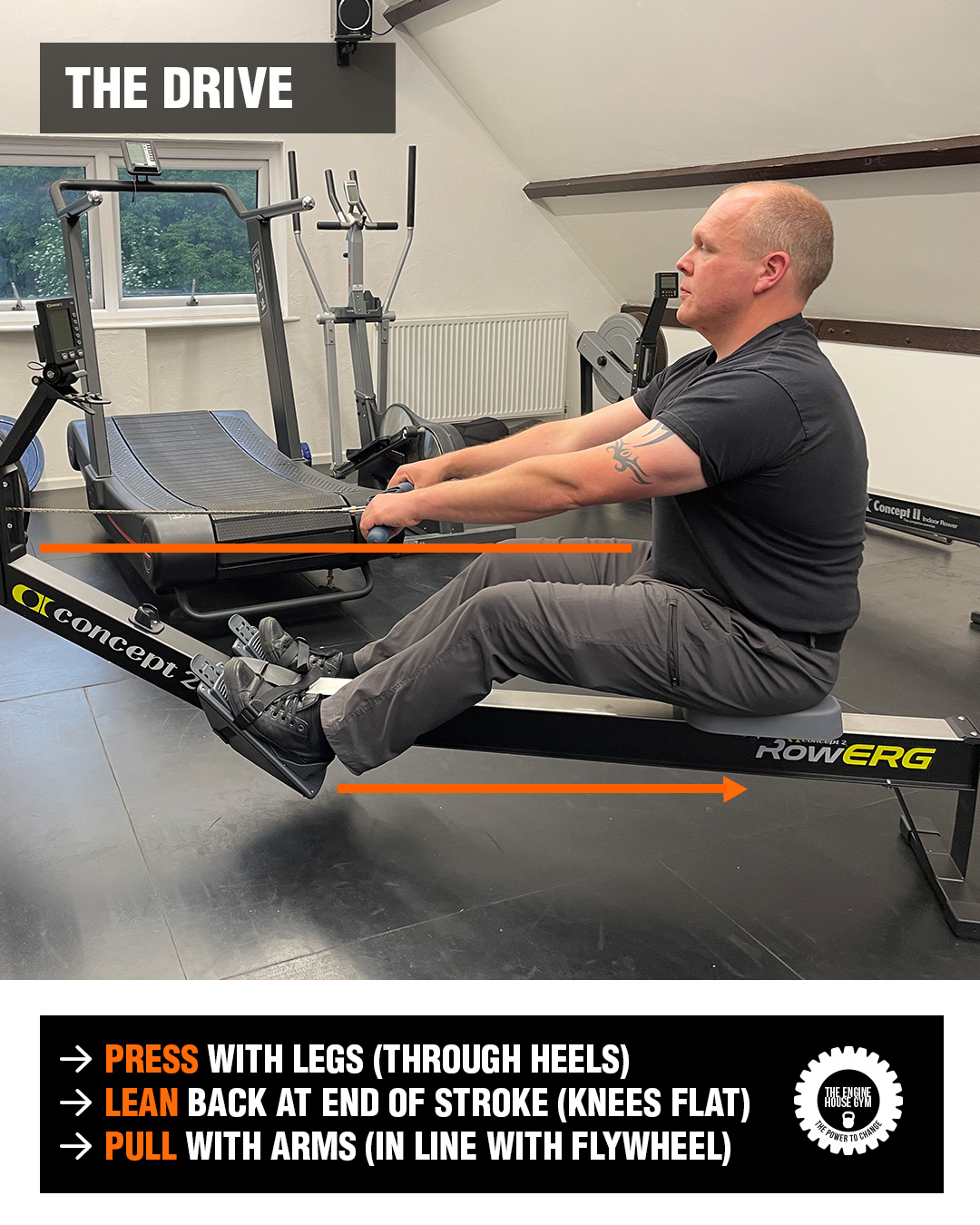
The Finish
The end point of the stroke.
- Upper body is leaning back slightly with good support from your core
- Legs are fully extended
- Handle is just below your sternum
- Shoulders should be low, grip is relaxed and wrists flat
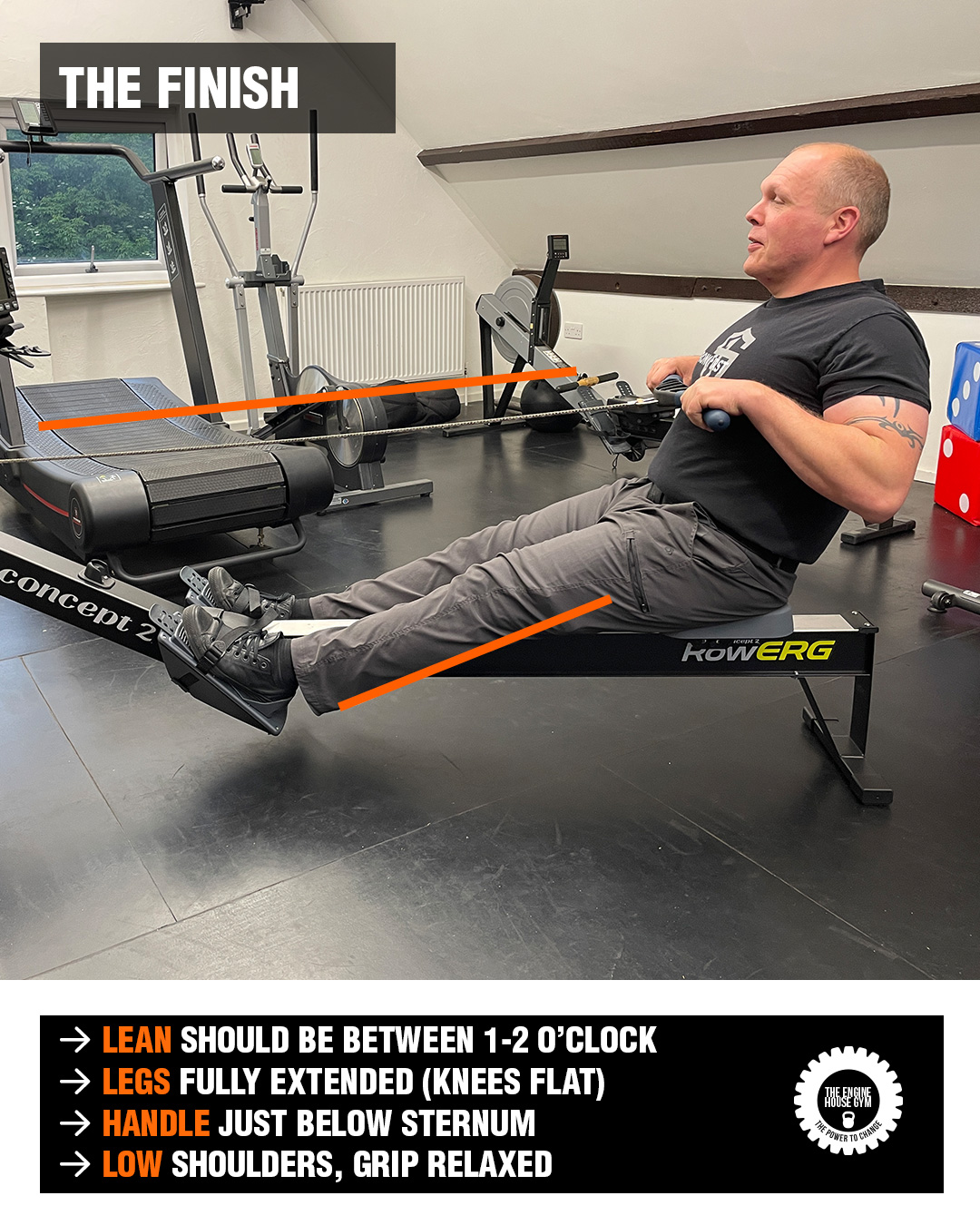
The Recovery
The final part where you move forward.
- Extend arms so they straighten
- Then lean from the hips towards the flywheel
- When your hands clear your knees, knees then bend so you can slide forward
- Return to the catch position
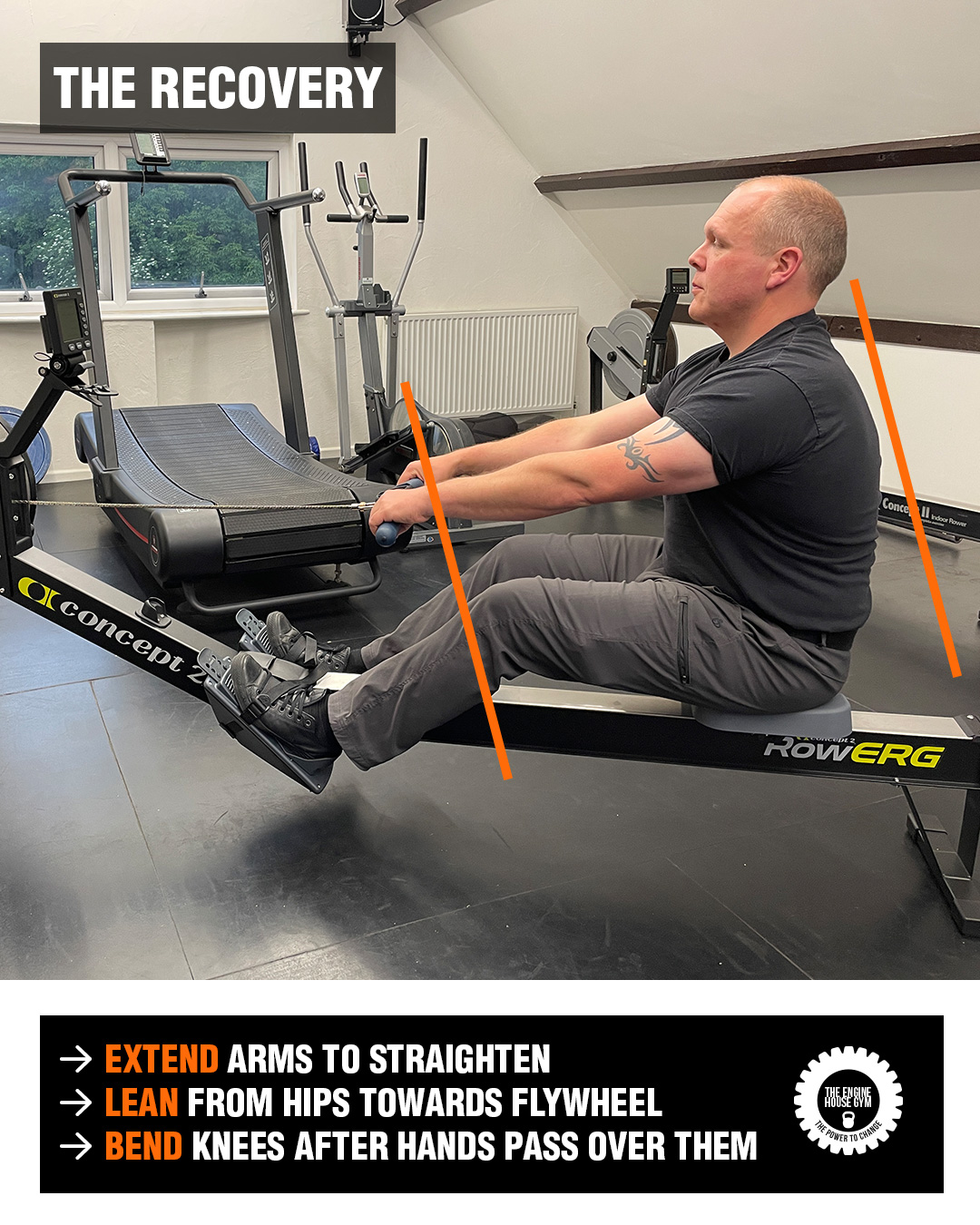
Can you spot the similarities yet with a kettle bell swing? Here they are:
- They are both a hip hinge movement
- They work the similar muscle groups
- Most of the power comes from your legs.
Common errors when rowing
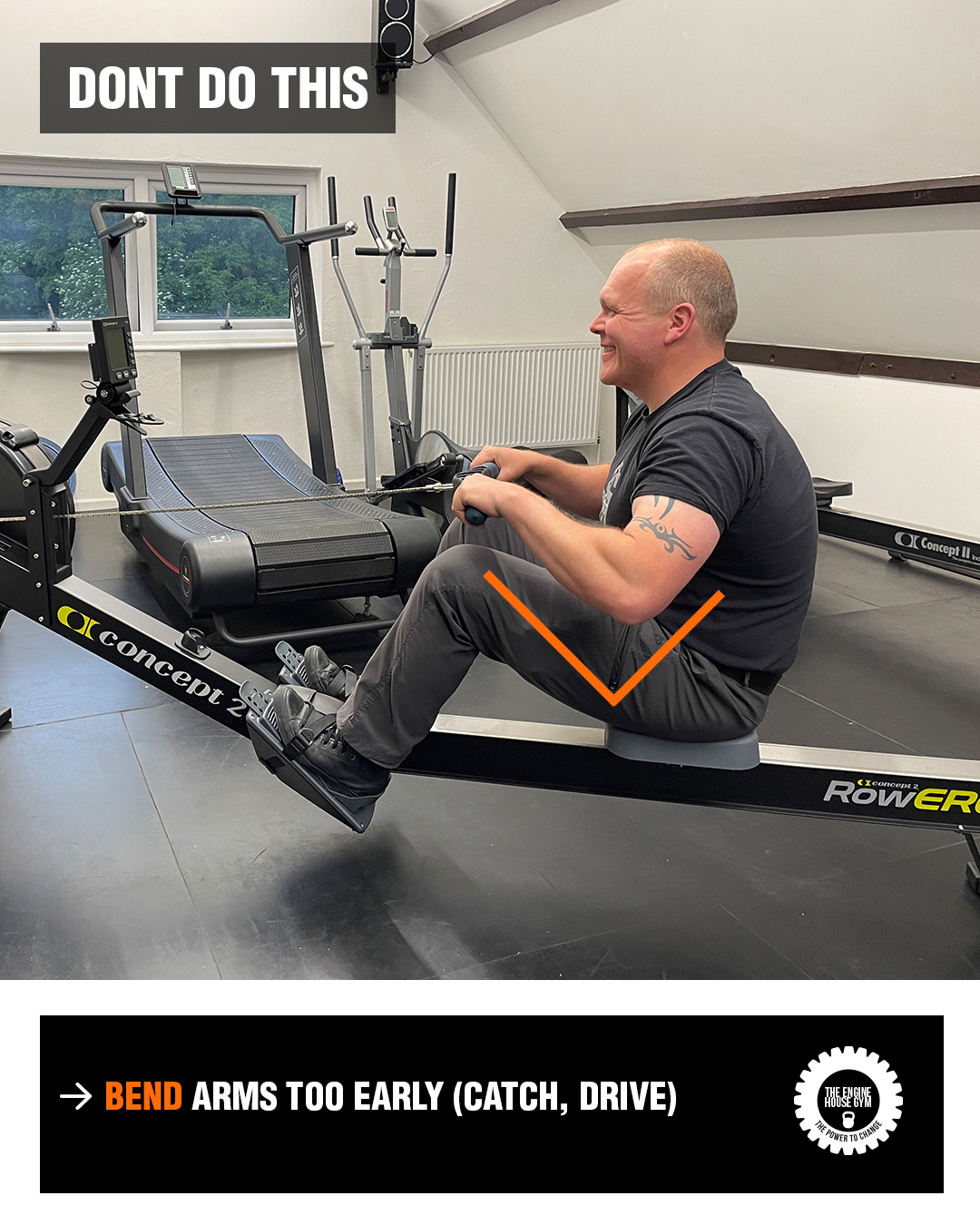
Bending arms too early
The stroke needs to be initiated with your legs, not your arms
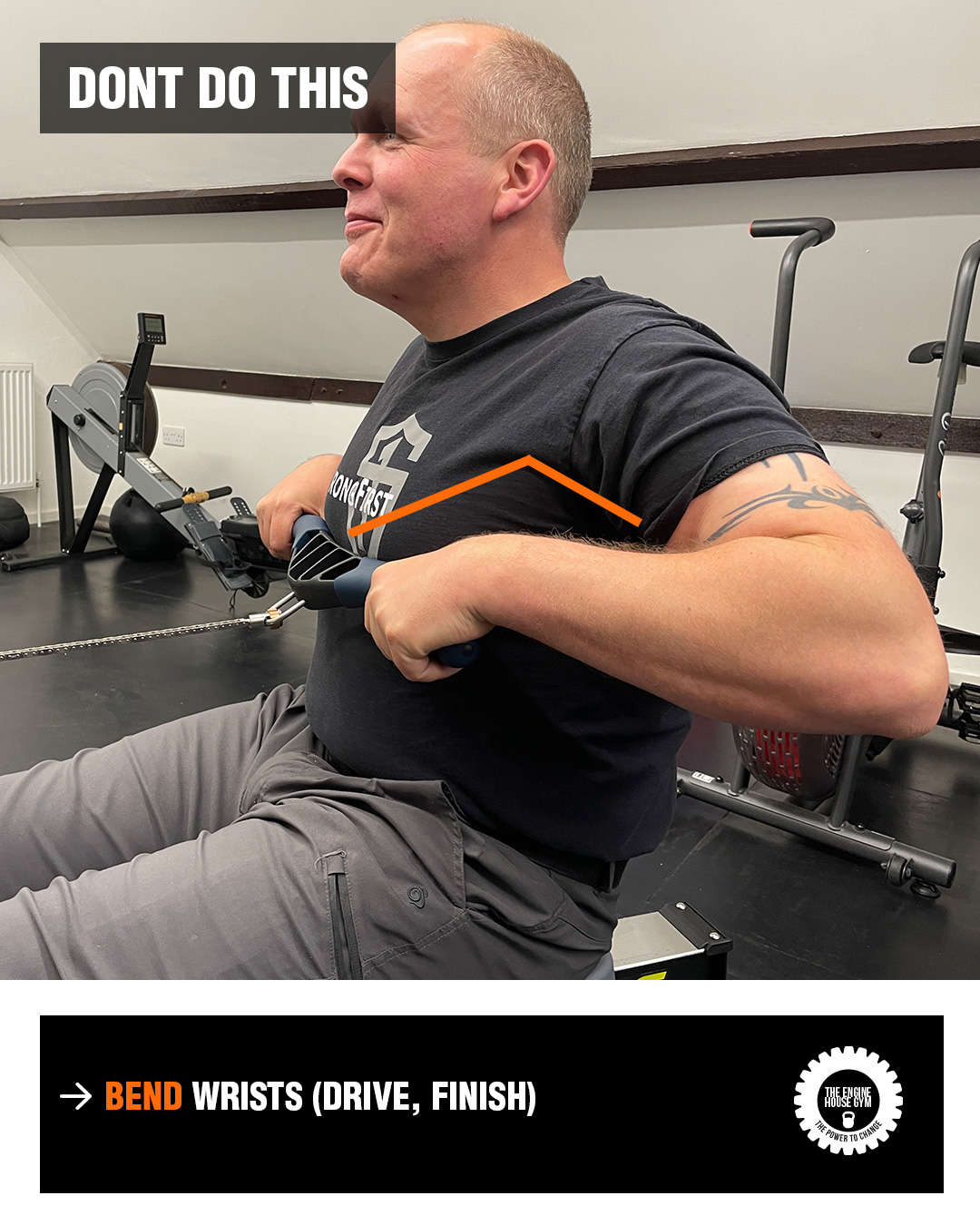
Bent wrists
Should be flat for the entire stroke
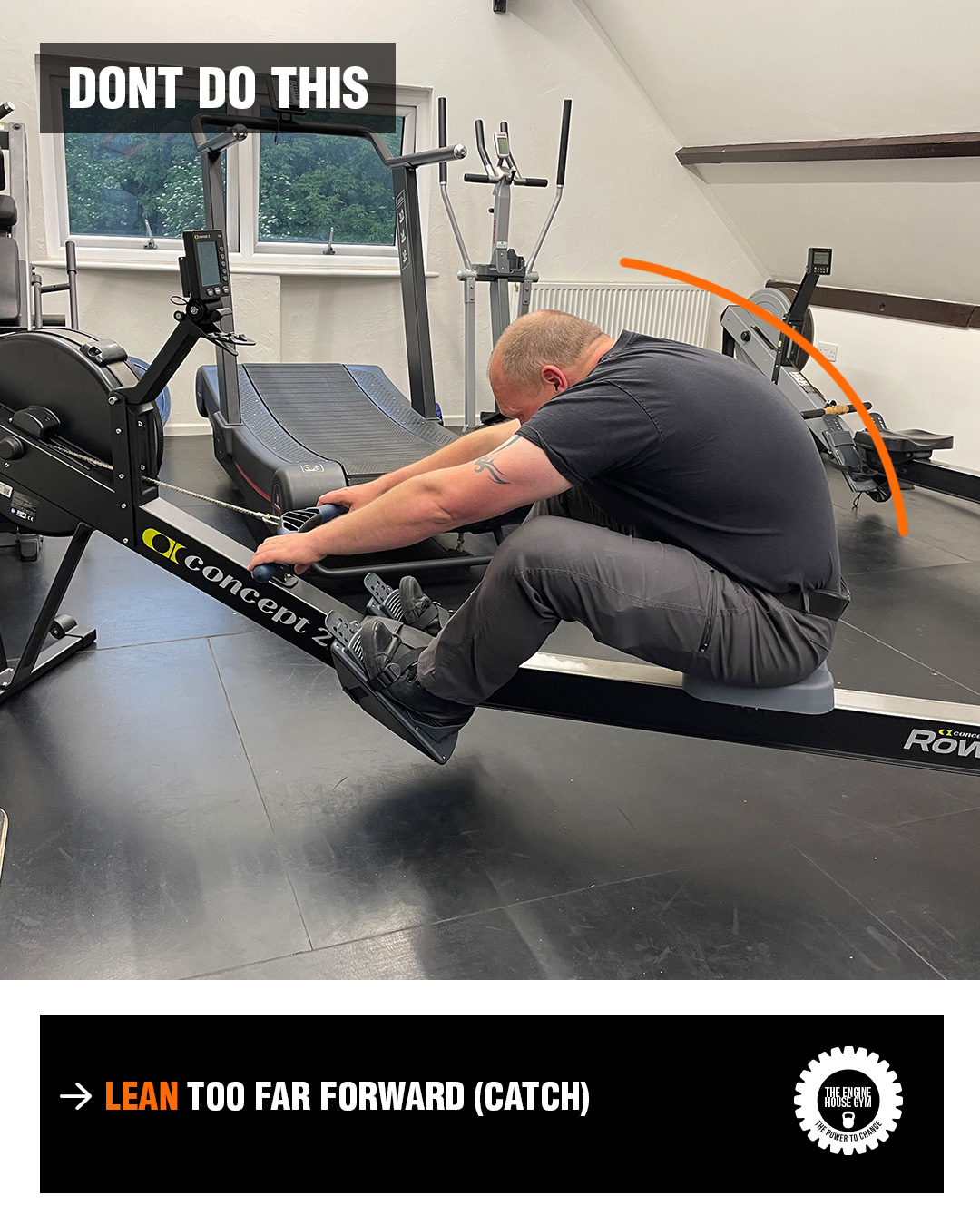
Leaning too far forward
Leaning early in recovery (just before you bend your knees) and over leaning at The Catch
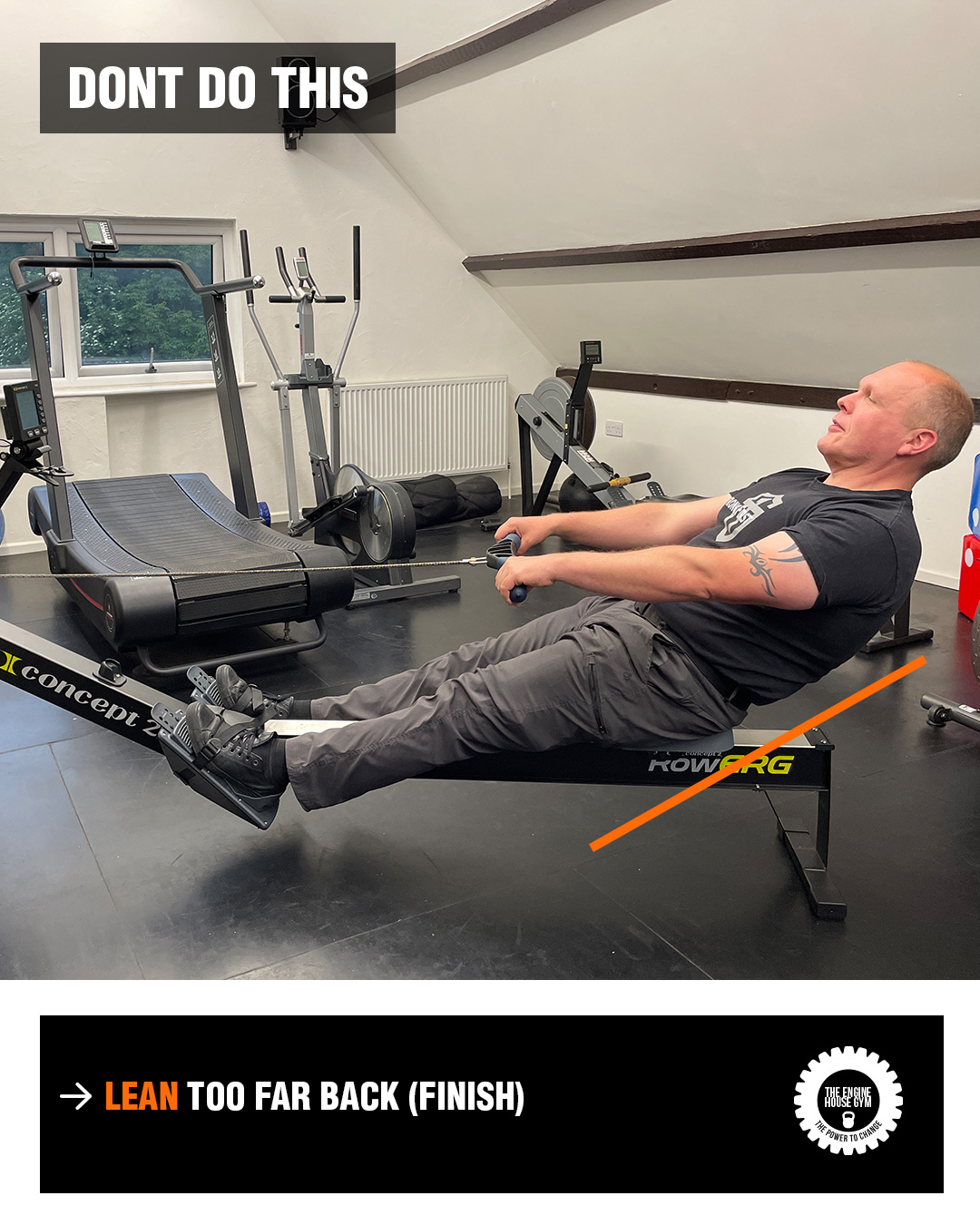
Leaning too far back
Aim for 1-2 on a clock face
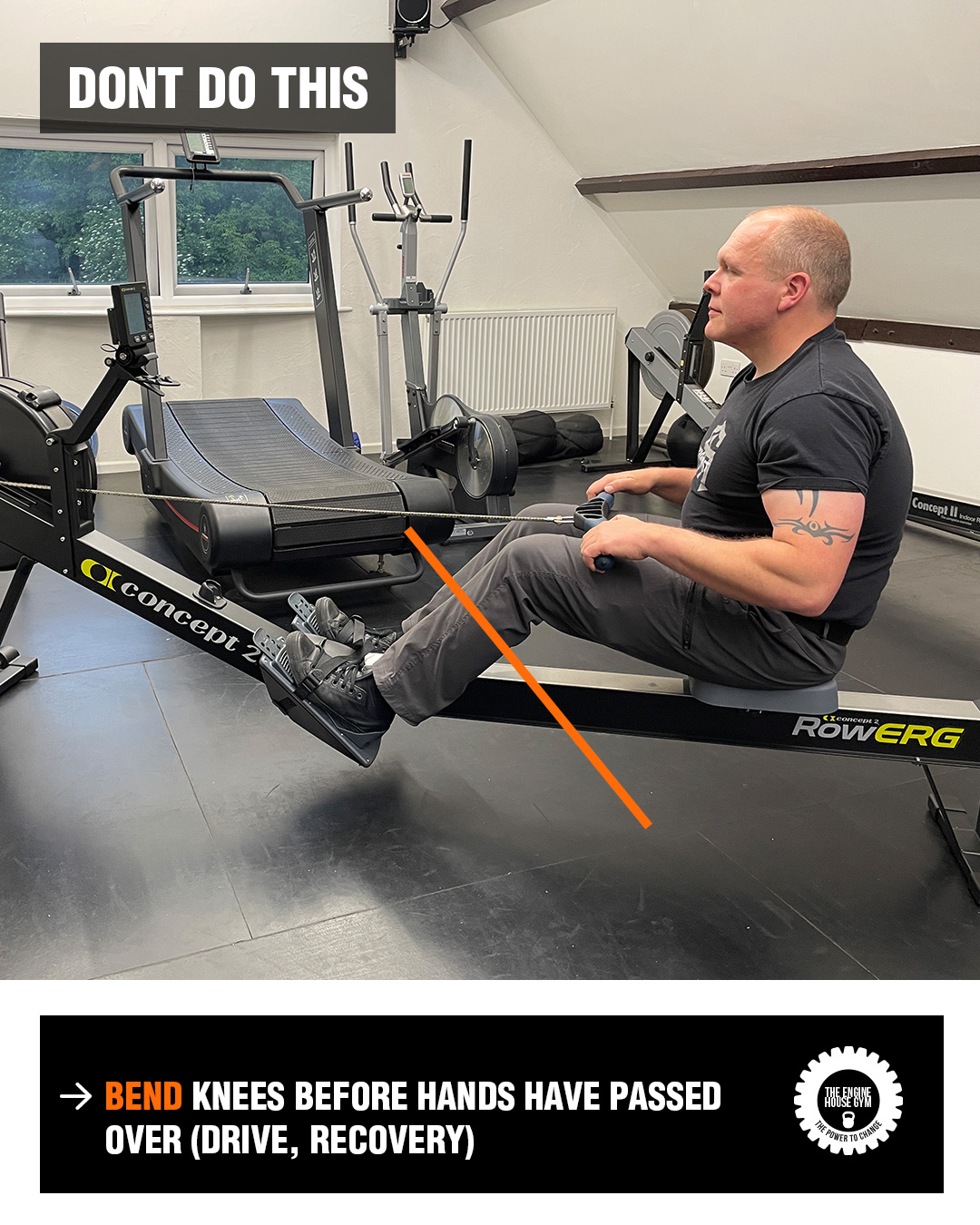
Bending knees early
Handle should clear the knees before you bend them on the recovery
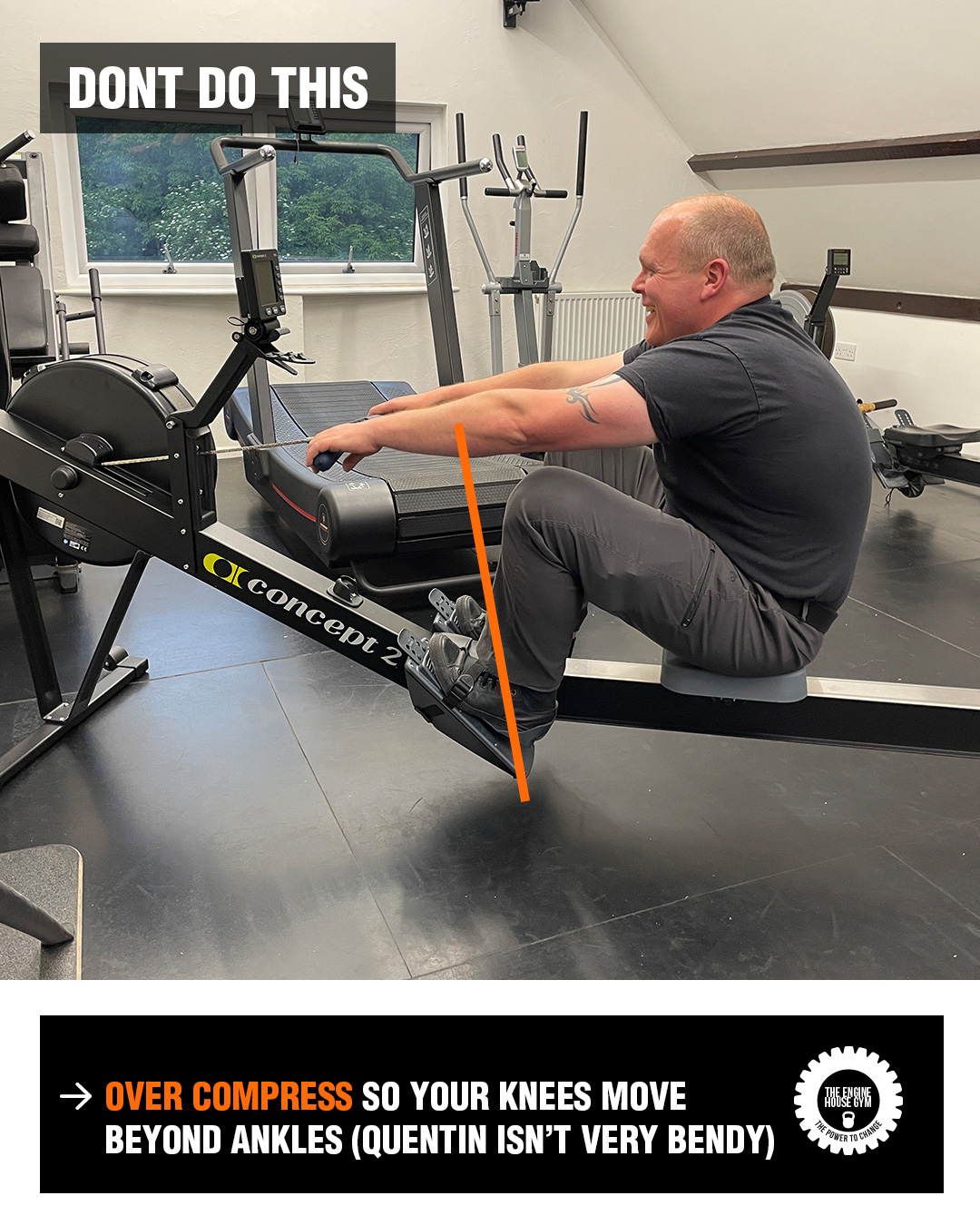
Over compression
Knees shouldn’t move forward past the ankles

Damper setting too high
The damper controls how much air is sucked into the cage and therefore the “feel” of the stroke, not the intensity/resistance level that you’re rowing at. The intestity of a work out is controlled by you and how much you use your legs, back and arms to move the handle. A better metric to look at is your Drag Factor. Not convinced? Concept2 have a whole article explaining why a damper setting of 3-5 is probably best.
Shooting the Slide
When you initiate the stroke with your legs, but the rest of your body moves afterwards. Aim for keeping your arms and the handle moving in unision with your legs.
Power & Stroke Rate
The harder you pull, the faster the flywheel goes and more wind resistance generated. To row with more intensity, you need to push harder with your legs and connect that leg drive through your back and arms to spin the flywheel. When you push harder with your legs, the speed of your drive increases, which means the time to drive decreases. This means you’ll get faster split times.
The recovery doesn’t need to speed up as you increase intensity. A rushed recovery may make you feel like you’re moving faster, but actually speeding through this point won’t do you any favours and won’t improve your split time. Relax on the recovery and breathe before the next drive. The recovery should take longer than the drive.
Keep any eye on the monitor as you increase your intensity – you’ll get instant feedback on your average pace for every stroke (time/500 m). The smaller the number the less time to cover the distance. The harder you drive your legs, the lower the split time will become.
Remember, intensity is not directly related to stroke rate. You can row with high intensity at a low stroke rate and acheive a better split time than rowing at a lower intensity but at a faster stroke rate.
Always check your technique – row well even when you row harder.
Tracking your progress
All of the rowers in the gym have bluetooth capabilties – that means you can use your phone whilst you’re rowing to log your workouts and keep track of how you’re doing.
It’s simple to set up – download the Concept2 ErgData app for your phone and set up a Concept2 log book account. Then, next time you’re ready to row simply connect your phone to the rower via bluetooth and you’re good to go! Need a hand with this? Speak to Quentin or Abi and they’ll get you set up in no time!
We’ve even set up an Engine House Rowing Team and will be entering the next Concept2 Fall Team Challenge. If you’d like to join the gym rowing team, once you’ve created your Concept2 account follow the instructions here. Just look for The Engine House Gym – Ardington in the team list.
Get 2 weeks free!
Sitting on the fence about signing up? We get it - we wouldn't want to buy before we try either! That's why we offer a 2 week free trial so you can come along and see what we're all about.
